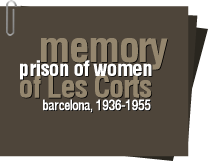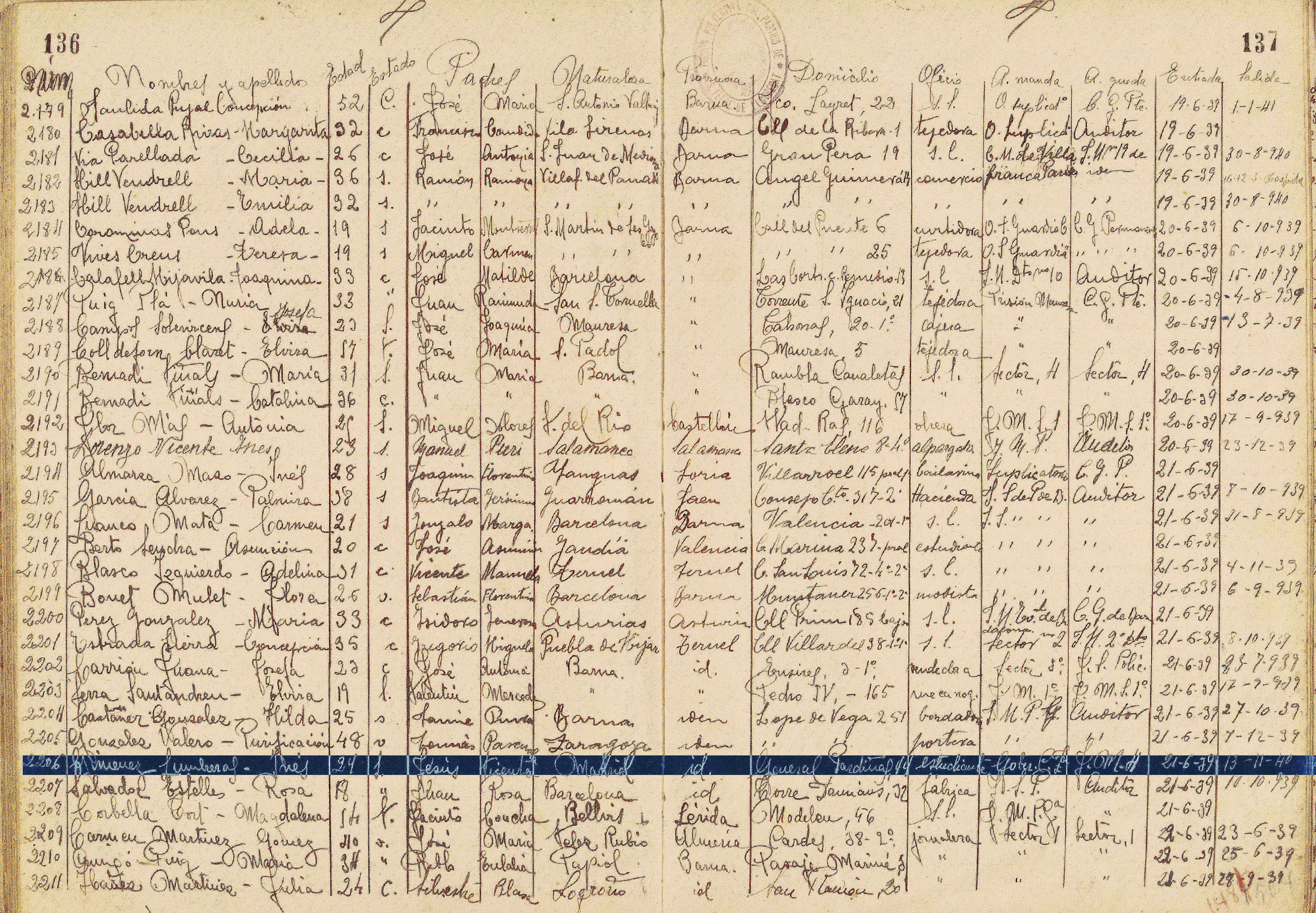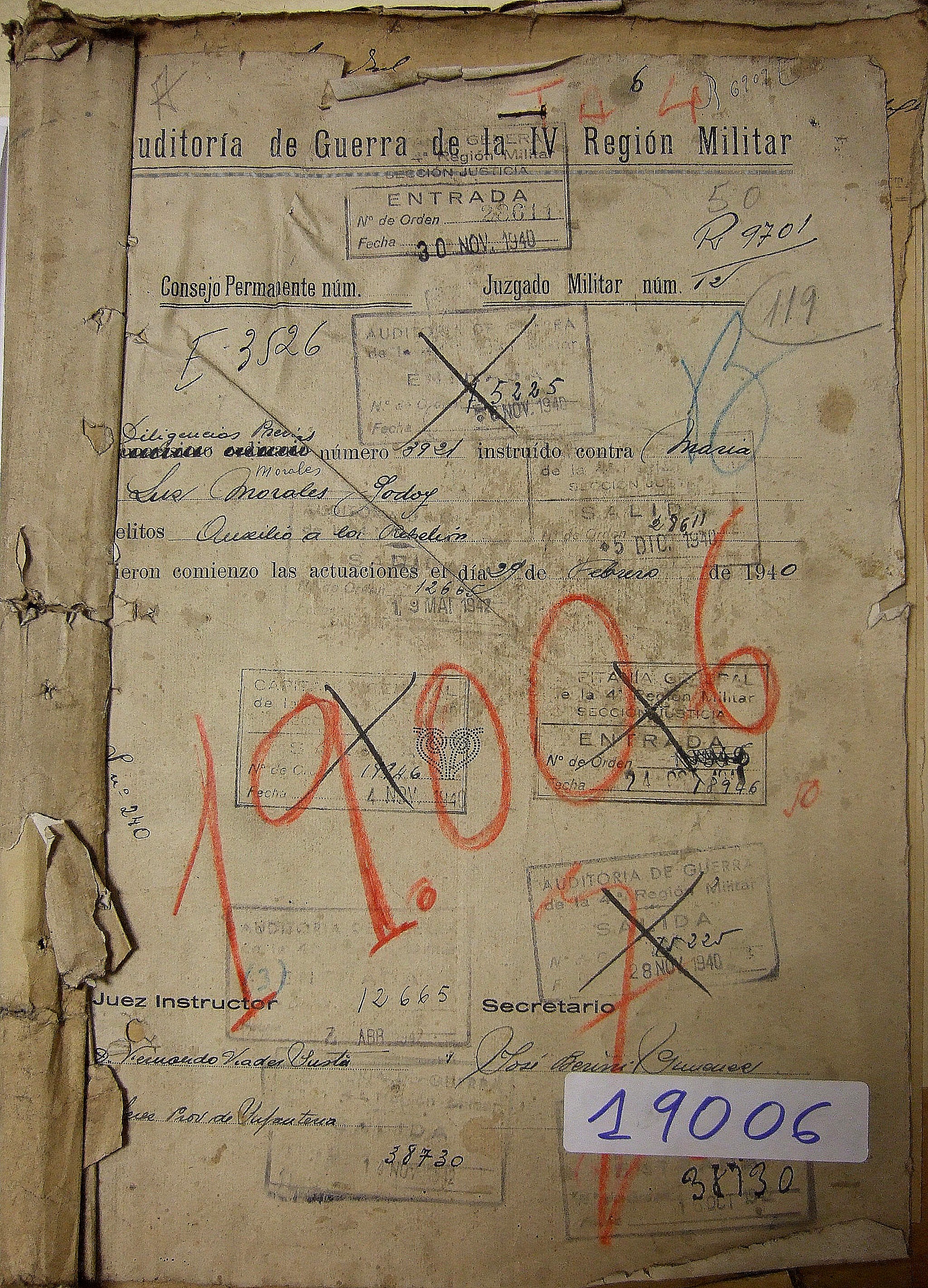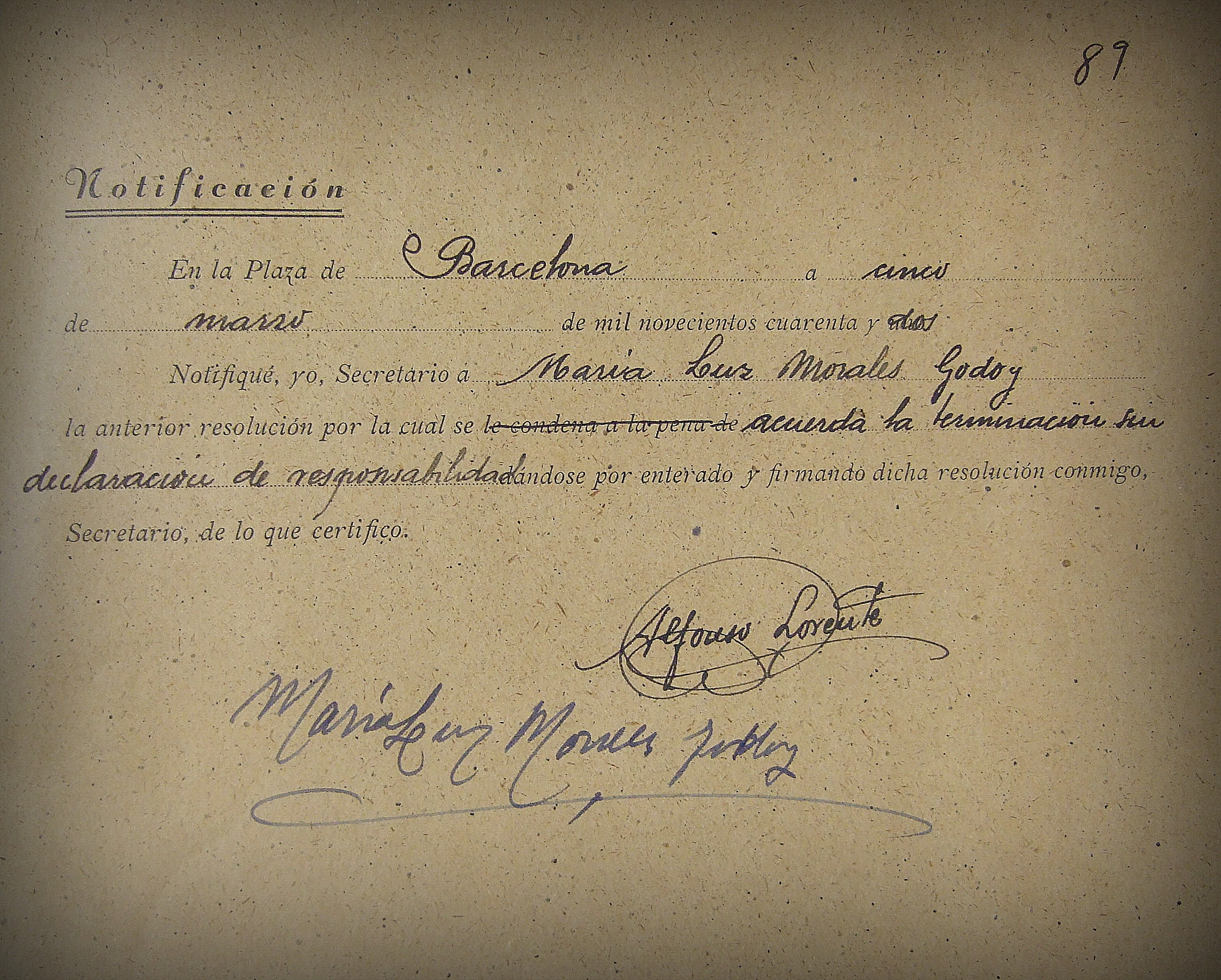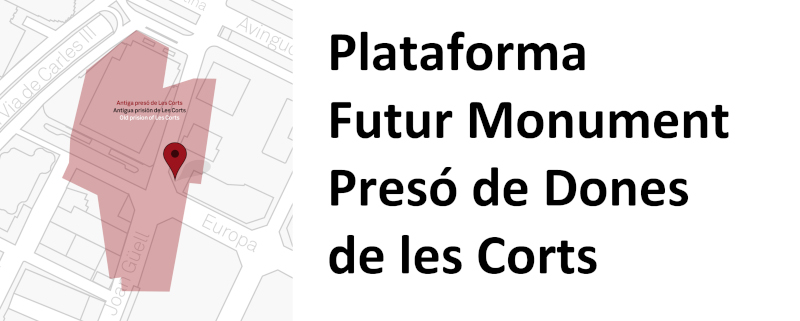Inés Giménez Lumbreras was one of the defendants convicted for the trial and execution of Carmen Tronchoni in 1938.
PSUC (Socialist Unified Pary of Catalonia) member Isabel Vicente, who joined Les Corts in 1940, recalled sharing some time in prison with a member of Falange who was also executed on that year, for, so she had heard, denouncing Carmen Tronchoni.
Isabel had reported hearing that this Falange member (someone called Blanca, who was in fact Inés) had accused Carmen of espionage "because they had both fallen in love with a red commander”, but these verbal accounts had become very distorted and unreliable.
Whatever the facts might have been (there is uncertainty as to whether Inés had been somehow played by the SIM, the Military Information Service- the story stuck, supported by a heteropatriarchal view that claimed both women acted out of a rivalry for a man’s love and attention.
Inés was able to say goodbye to her mother and daughter Hortensia in a “carta de capilla” that has survived to this day.
According to the city census, Les Corts was crammed with 950 women by the end of 1940. The prison had reached overcrowding conditions the previous year due to the detention of city residents and transfers from other prisons such as the ones in Badalona, Manresa, Terrassa, Berga, Sabadell, Sant Feliù de Llobregat, Mataró, Granollers and other such facilities from elsewhere in the province.
From the summer of 1939 the provincial prison was also being used as a temporary detention centre. Isabel Vicente recalled the influx of women on a regular basis, usually in the early hours, groups of women already convicted, from all corners of Spain, on their way to central prisons, or to prisons where they were due to serve their time such as Girona, Amorebieta (Bizkaia), Saturrarán (Gipuzkoa) or Palma de Mallorca prisons.
One of them was the young socialist from Madrid Ángeles García-Madrid, who in the summer of 1940 “stopped over” for 3 months in Les Corts on her way to the central prison in Girona.
Writer María Luz Morales Godoy, the editor-in-chief of La Vanguardia from August 1936 to the start of 1937, the first woman to achieve such a position in Spain, was jailed in February 1940
Numerous people tried to intervene in her favour –the newspaper owner Carlos Godó, and members of Falange Félix Ros and Luis Santamarina, among others– but neither these efforts nor her failing health could prevent her spending a month in temporary confinement. It wasn’t until March of 1942 that she was cleared of any charges.
Fuentes:
ARXIU MUNICIPAL ADMINISTRATIU. Padrón de Barcelona. Distrito III, Barrio 16, Sección 51, Molinos 11; ARXIU NACIONAL DE CATALUNYA (ANC), Fons 200, Centre Penitenciari de Dones de Barcelona (CPDB), Llibre de registre de filiacions, UC 6555; ARCHIVO DEL TRIBUNAL MILITAR TERRITORIAL TERCERO DE BARCELONA (ATMT3). Diligencias previas 3921, NL. 19006/990.
FABRE, J. y HUERTAS CLAVERIA, J.M. (1977): “Conversa amb Isabel Vicente. Una vida a la Sedeta i a la presó”, in L’Avenç, 20, pp. 11-16; MARTORELL TRONCHONI, D. (2008): “Carrers de Picassent amb nom propri: carrer de Carmen Tronchoni”, in Festes Majors, Ajuntament de Picassent, pp. 20-33; CORBALÁN GIL, J. (2008): Justícia, no venjança. Els executats pel franquisme a Barcelona (1939-1956). Valls; HERNÁNDEZ HOLGADO, F. (2011): La prisión militante. Las cárceles franquistas de mujeres de Barcelona y Madrid (1939-1945), Universidad Complutense de Madrid, PhD Thesis.

